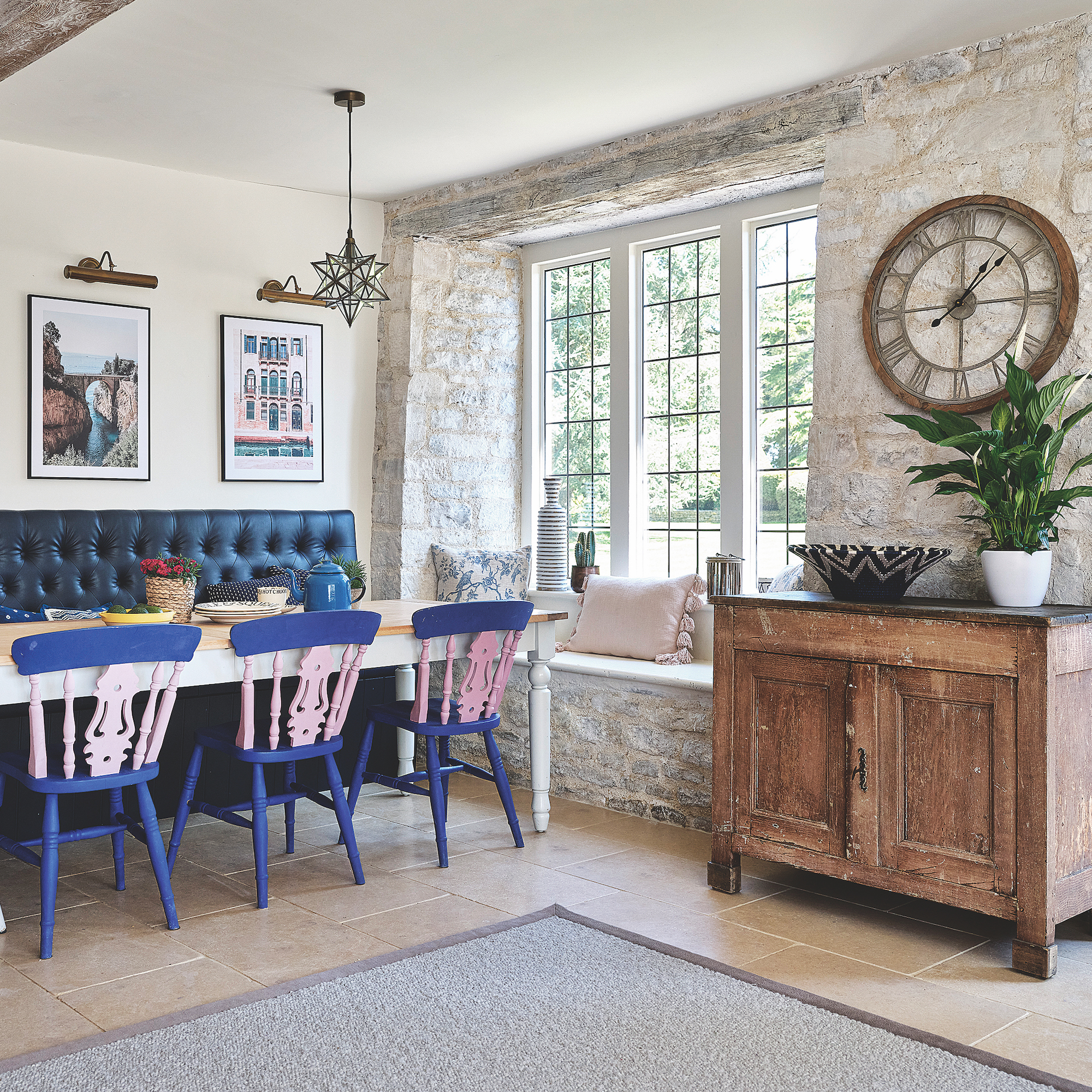
If the blitz of a NutriBullet and the whirl of the washing machine are disturbing your peace at home, don't despair.
While you're unlikely to completely soundproof your kitchen (unless you want to live in a concrete bunker), there are ways to reduce prep, cooking and clean-up noises from infiltrating too far into the rest of your home.
'Kitchens are notoriously difficult to get the acoustics right. We get tempted into acres of stone floor and worktop, with huge great uncurtained windows, and it can create an acoustic nightmare as all those hard surfaces just turn into an echo chamber,' explains interior designer Lucinda Griffith.
Noisy kitchen appliances can be a particular problem in open-plan or broken-plan living spaces, where there are no walls to trap sounds. But any kitchen can benefit from these pro tips to reduce the clamour and increase the calm.
1. Factor in a utility room if you can
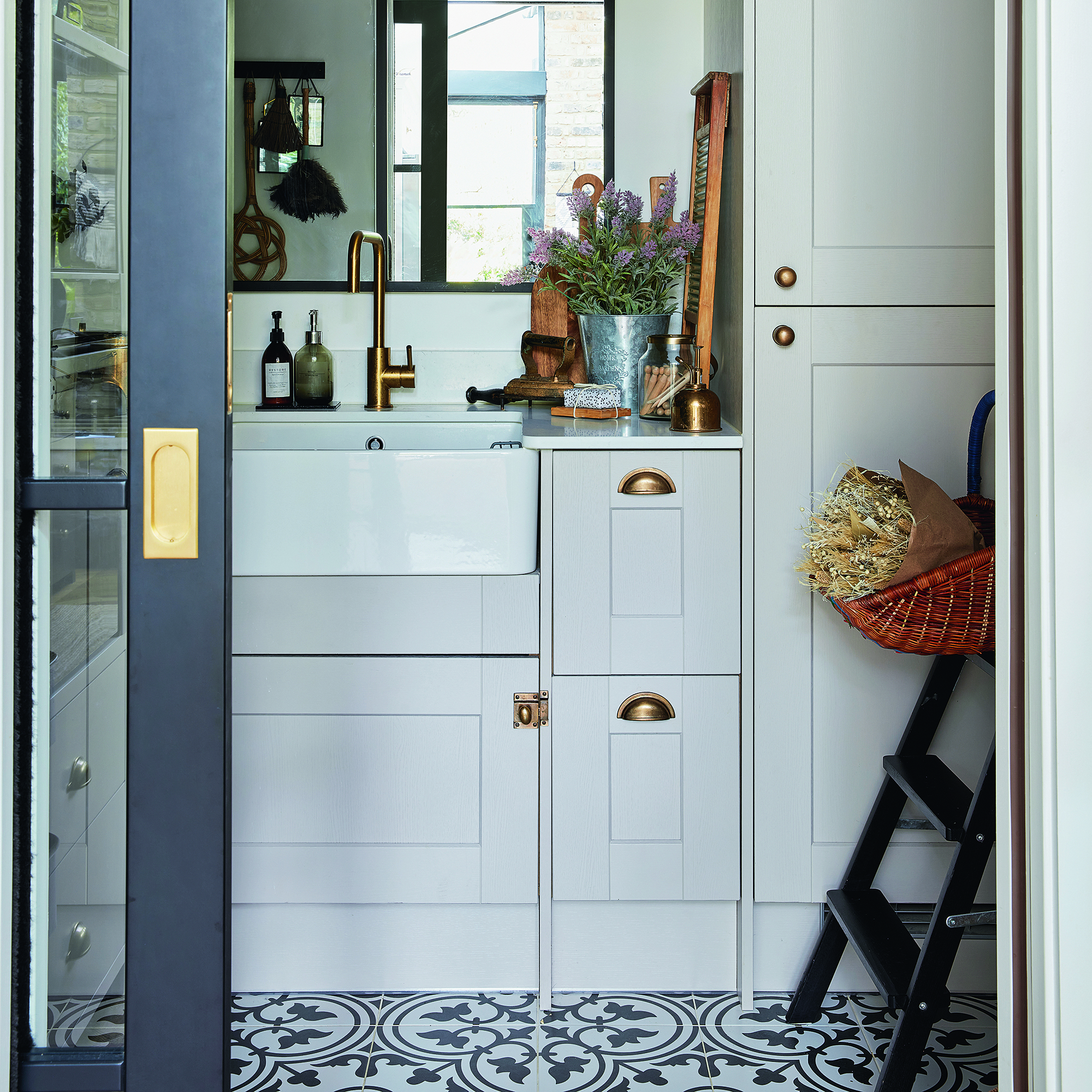
A separate utility room isn't always possible, but finding a way of separating noisier appliances such as washing machines and tumble dryers from your main living space can do a lot to reduce noise travelling around your home.
'The layout of your kitchen plays an important role on both its aesthetics and its acoustics. While open-plan kitchens are great for social interaction, this layout will also make it difficult to prevent noise from traveling into your living areas,' says Poppy Szkiler, CEO and founder of Quiet Mark, which tests and assesses products that reduce unwanted noise in the home.
'Try to avoid placing noisy appliances such as washing machines near your living area. The spin cycle on a washing machine can be as loud as 86 decibels, which is significantly louder than normal conversation, which is about 60 decibels. Specifying the best and quietest appliances couldn’t be more important.
According to the new Quiet Mark 2023 Noise Report, washing machines and refrigerators are the appliances most would like to operate quietly in our kitchens.If you can find a way to squeeze in a small utility room or laundry room, then not only will your home feel more organised, it should be quieter, too.
2. Lay floors with sound reduction in mind
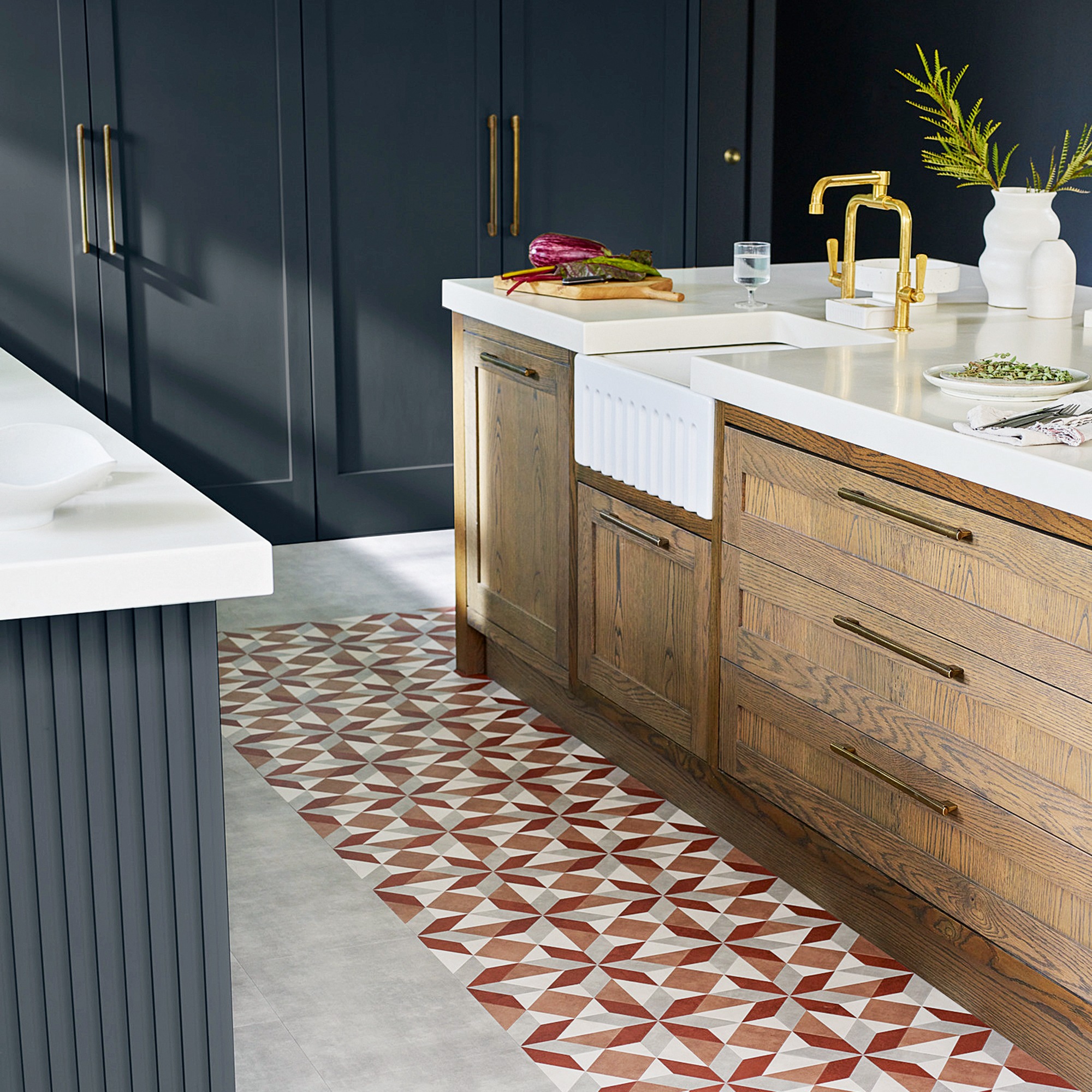
If a new kitchen floor is on your agenda, look beyond aesthetics and underfloor heating and consider how it might stop sound travelling around your kitchen and beyond. A solid, dense floor can stop sound radiating around a room – great news if your washing machine's spin cycle makes it feel as if the whole house is about to take off.
'Sound is a series of vibrations. Often these vibrations are carried through the air; for example, noises from from a television, people talking, or a barking dog. But these vibrations can also move through solids, meaning that sound can travel via the structure of a building. When physical impact causes vibration in a building, it's called impact noise,' explains Paul Barret, head of product management at insulation experts, Rockwool.
'Reducing impact noise transfer through a floor is about making it difficult for these vibrations to travel – which is achieved through a combination of mass, absorption and isolation. Mass is provided by heavy, dense materials such as masonry, concrete, cement board plasterboard, and of course, insulation.'
Paul recommends three ways a floor can reduce sound in your kitchen. The first is by using an isolating product such as Rockwool Rockfloor, which separates the floor from the structure of the building, preventing sound from travelling.
The second is to use dense sound-insulating panels beneath the floor surface, to absorb sounds and prevent vibrations.
Lastly, make sure all joints and edges are sealed with an acoustic mastic. 'In some ways, controlling noise transfer is like controlling water,' Paul explains. 'Just as a hole in a bucket lets water escape, even a small gap in a floor or wall can reduce its ability to block noise.'
3. Soundproof walls with pictures and panelling
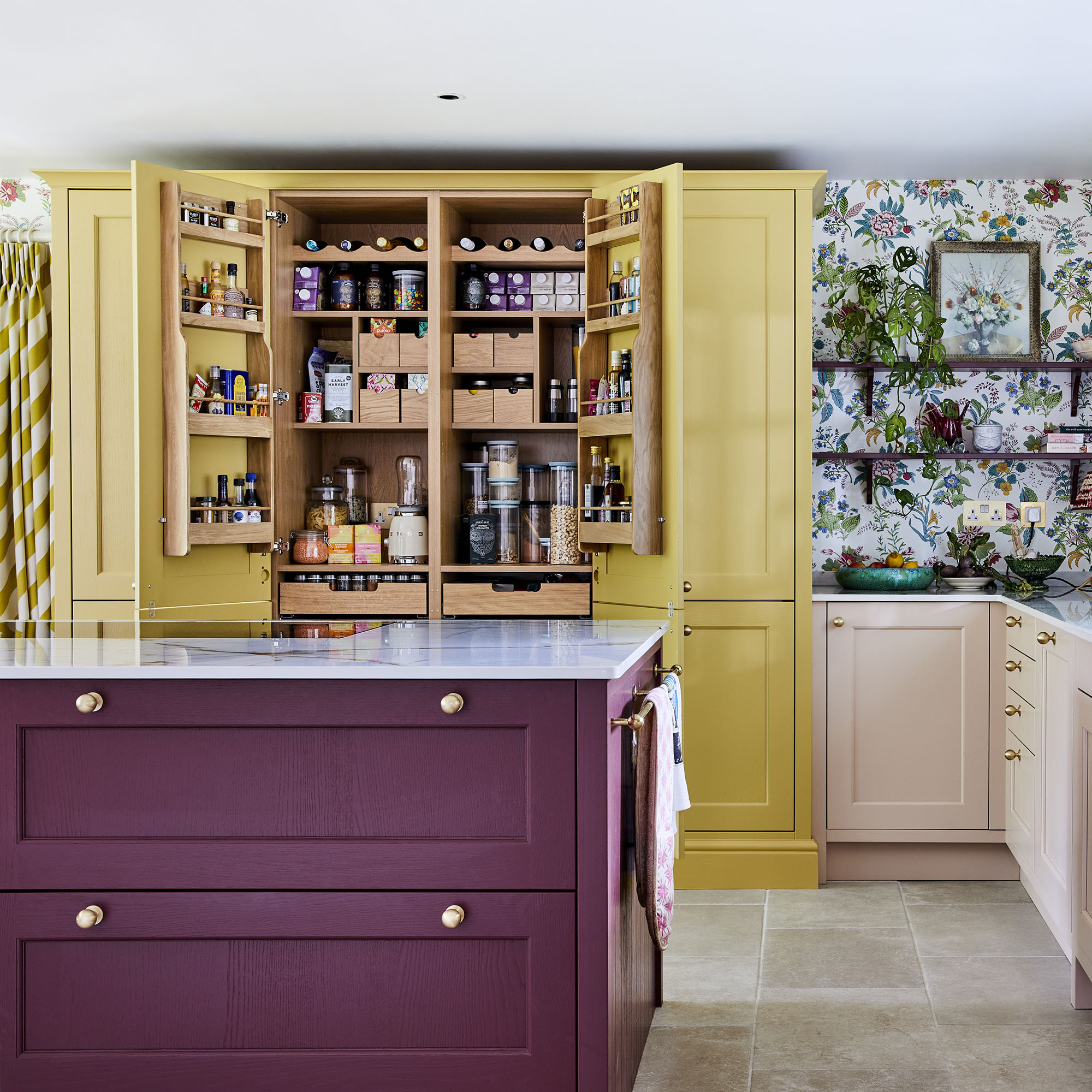
Kitchens today have a personalised feel, with artworks on the wall, kitchen shelves filled with decorative accessories, and curated display cabinets. Yes, it all looks lovely, but it can help stop sounds travelling out of the kitchen to disrupt the rest of the household.
'Don’t be scared to hang pictures in your kitchen,' advises interior designer Lucinda Griffigh. 'Canvas paintings or prints will help to muffle the sounds that can bounce around on hard walls.'
The trend for wood panelling ideas can work really well to reduce noise in a kitchen – on its own, panelling provides an extra layer that helps to stop soundwaves passing through the wall. But add an insulating layer between the wall and the wood panel and it will absorb even more sounds, helping the room seem quieter both inside and out.
A floor-to-ceiling larder cupboard, like this one in stylist Sophie Robinson's kitchen, will also act as a sound barrier – and provide tons of kitchen storage, too.
4. Cover up appliances
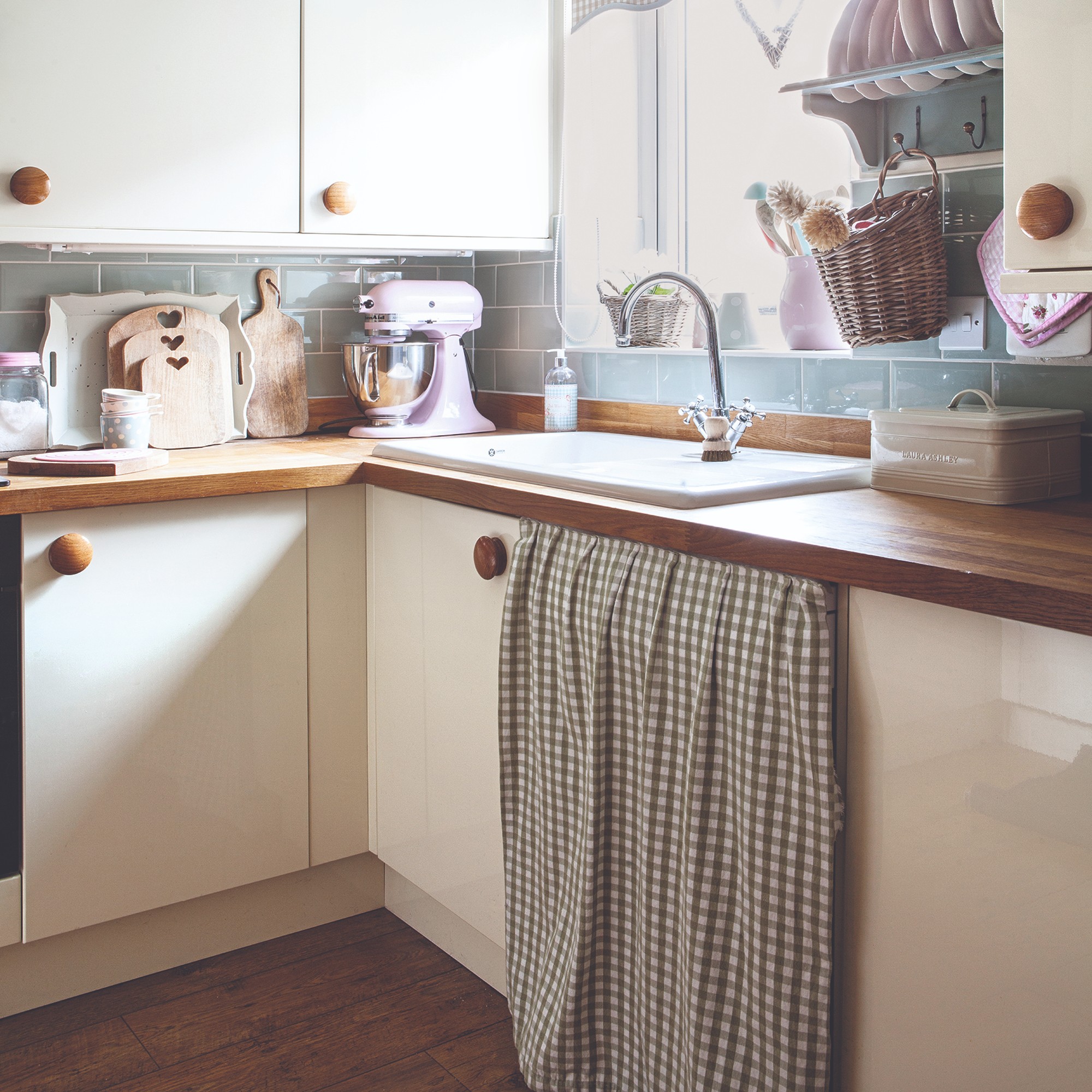
Integrated and built-in appliances give a kitchen a sleek look. But being enclosed in a cabinet or behind a door has added benefits.
'Freestanding appliances are typically the most practical but as they’re fully exposed, they will emit the most amount of sound. Built-in appliances will most likely be the quietest as they enclose the main noise generating components,' explains Poppy from Quiet Mark.
Read reviews and check product information on the amount of noise an appliance or gadget will produce. Not sure? Quiet Mark certifies products that have undergone third-party testing and are amongst the quietest in their category.
5. Add textiles to soften kitchen sounds
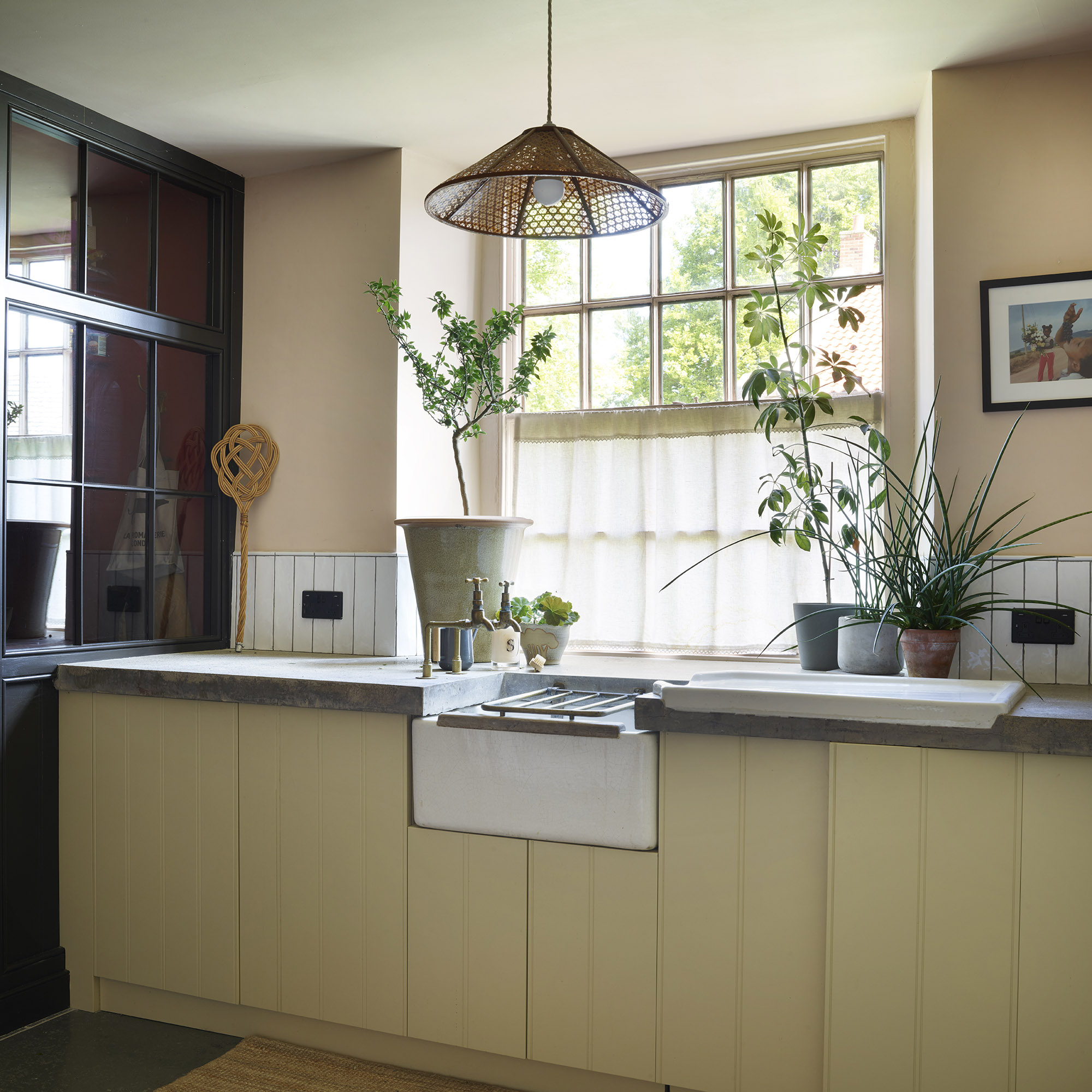
Rugs in a kitchen used to be a no-no, but new washable designs mean you can keep your space hygienic and still enjoy softness, colour – and quiet – underfoot.
'A large rug under your kitchen table will help lower noise levels. Companies like Ruggable do washable rugs in a huge range of designs and patterns and sizes so you don’t have to worry about spills on them, but it will help to soften the acoustics,' suggeests interior designer Lucinda. 'Make sure the rug is big enough that when you pull your chairs out, they are still on the rug!'
Other textiles will work in the same way, while bring colour and style to your kitchen. Think cabinet and under-sink curtains, cushions on benches and chairs, and kitchen blinds and café curtains at the windows to help stop sounds bouncing off the exposed glass.







